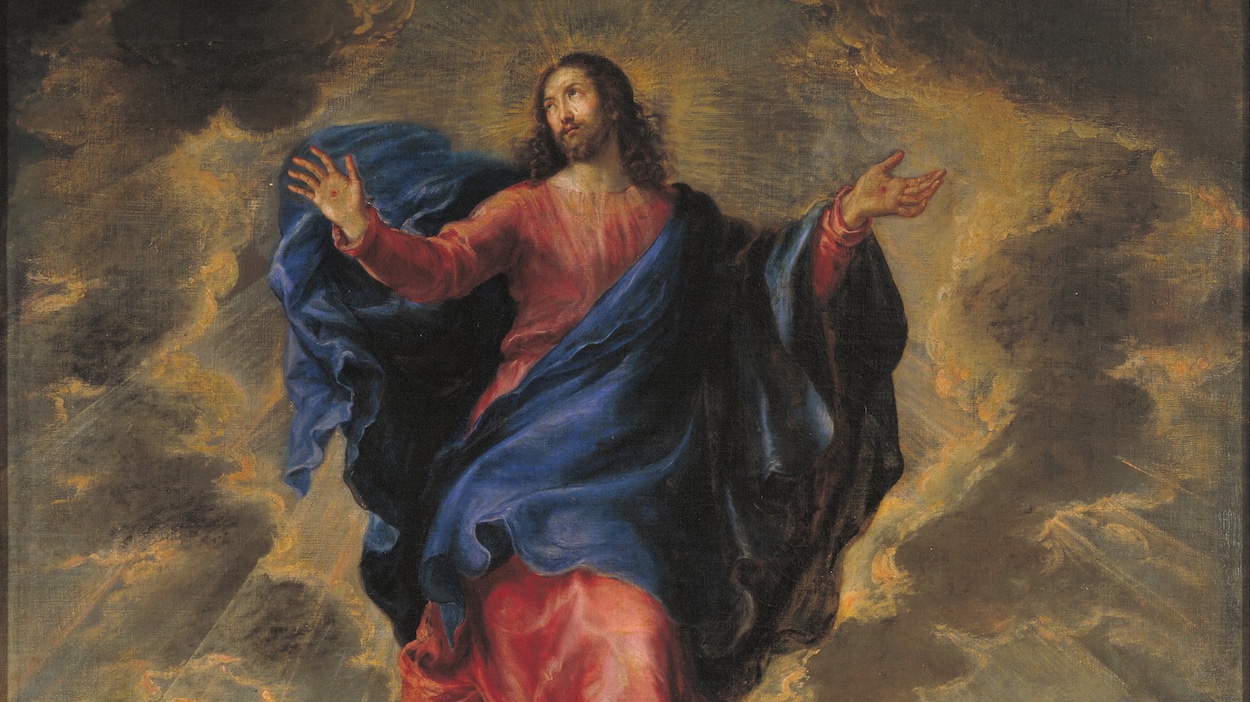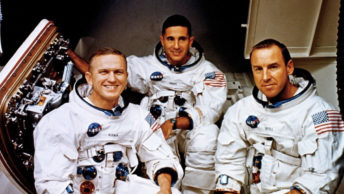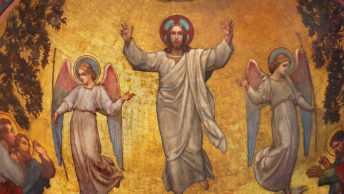The solemnity of Jesus’ Ascension into heaven is a feast which requires considerable clarification and an extensive explanation lest it might wind up gutted of its significance for our journey to the same destination reached by our Lord.
Ascension should be understood as the crowning of Christ’s victory over all evils and the fullness of his glory bestowed on him by the Father. We do not want to miss the main thrust of this solemnity. In the opening prayer the presiding priest voices the entreaty of the whole community:
“Gladden us with holy joys, almighty God, and make us rejoice with devout thanksgiving, for the Ascension of Christ your Son is our exaltation, and, where the Head has gone before in glory, the Body is called to follow in hope.”
Now, to look at the Ascension of the Lord as our exaltation requires a lot of adjusting. It is so for two reasons:
The description given by Luke (Acts 1:1-11) seems to refer strictly to Jesus himself. He is depicted, or so it seems, as going up to the sky the way a hot air balloon would go up until he is hidden from the disciples’ sight by the clouds below. In this description, heaven is instinctively pictured as a “place” somewhere above the clouds; and upon arrival there, Jesus would spend his eternity sitting on a throne at the right hand of the Father’s throne.
Personally, I do not find all this inspiring. Accepting this description of the Ascension event, logically, we would need a reunion with Jesus either by us going up to those heavens above the clouds or by Jesus coming down to pick us up at the end of time. A clarification is in order as our knowledge is still conditioned by our having being born in time and space and being unable to grasp the fullness of the Ascension’s significance beyond time and space.
This adjustment begins with a second look at the readings.
We shall start with a prayer suggested in our second reading: “May the God of our Lord Jesus Christ, the Father of glory, give you a spirit of wisdom and revelation resulting in knowledge of him.” (Ephesians 1:17)
As, according to the Father’s plan, this prayer is already answered; it is a fait accompli, it should dawn on us that Jesus, as the Head of the Body, is always and forever with his Body. It cannot happen that Jesus Christ, the Head, might be in the heavens with parts of the Body (saints) while some of the Body is in another place called Purgatory and, finally we, the remaining parts of the Body, are here on earth until we die or until the Lord comes to pick us up at the end of time. Body and Head are always a unified entity. We, the saints and the members being purified after death, are forever integral parts of the Body; we are in heaven because heaven is everywhere and heaven is everywhere because God is everywhere. We begin, then, to understand how the Ascension of the Head has, by necessity, to be also the Ascension of the Body, all of us included: our exaltation, precisely.
The Gospel passage (Mark 16:15-20) reinforces this concept of Ascension as fullness of glorification of the whole Christ, Head and Body in its completeness.
“But they went forth and preached everywhere, while the Lord worked with them and confirmed the word through accompanying signs.” (Mark 16:20)
Therefore, it is time for us to feel comfortable leading our daily life within this context of our Ascension in union with Christ. While on this earth, we ought to preach everywhere (with our life mostly) and do such a convincing and vigorous job that the Lord may be bound to confirm also our efforts with wonders and miracles. We ought to do so all the while progressing boldly and confidently, even amid considerable obstacles, convinced that the Lord is working with us and that his glory and ours are a done deal.
The second profitable consideration about our Ascension with Jesus is the following:
The Ascension is the feast designed to pull us away from our former way of thinking about our faith and our former way of living it out. The Ascension should help us develop a mature way of living in Christ, with Christ, for Christ. St. Luke tells us that Jesus began this process of reaching “Christian maturity” for 40 days, a time sufficiently long to get the fledging Community of believers away from clinging to a physical presence of Jesus and into a presence rooted strictly on genuine faith.
In one of his many writings, Pope St. Leo the Great (400-461) lists what Jesus did for his disciples during those 40 days.
He confirmed the astounding, earthshaking fact of the Resurrection, of his victory over evil and death.
He went over again all the Sacraments that he had instituted, especially the Eucharist, and the power to remit sins that he had given them.
He breathed on them the Holy Spirit, the very Life of the Church.
He stressed the crucial importance of being open to his Word and to be always willing and ready to act upon It.
He also assured his assistance and guidance for the whole Church through the Twelve and their successors, especially Peter and the popes after him.
And, finally, he sent them all out on a mission to preach everywhere the Good News of God’s love for humanity and of his desire to extend his divine Family to include everyone, all over the world.
This is the mission that we ourselves, have to accept individually and as a Community. Hence, today, we commit ourselves completely to a tireless effort of preaching with our lives until the day in which our Ascension will be also our exaltation, our glory forever and ever.







